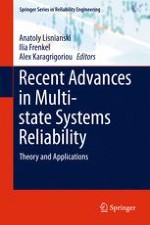This book addresses a modern topic in reliability: multi-state and continuous-state system reliability, which has been intensively developed in recent years. It offers an up-to-date overview of the latest developments in reliability theory for multi-state systems, engineering applications to a variety of technical problems, and case studies that will be of interest to reliability engineers and industrial managers. It also covers corresponding theoretical issues, as well as case studies illustrating the applications of the corresponding theoretical advances.
The book is divided into two parts: Modern Mathematical Methods for Multi-state System Reliability Analysis (Part 1), and Applications and Case Studies (Part 2), which examines real-world multi-state systems. It will greatly benefit scientists and researchers working in reliability, as well as practitioners and managers with an interest in reliability and performability analysis. It can also be used as a textbook or
as a supporting text for postgraduate courses in Industrial Engineering, Electrical Engineering, Mechanical Engineering, Applied Mathematics, and Operations Research.
